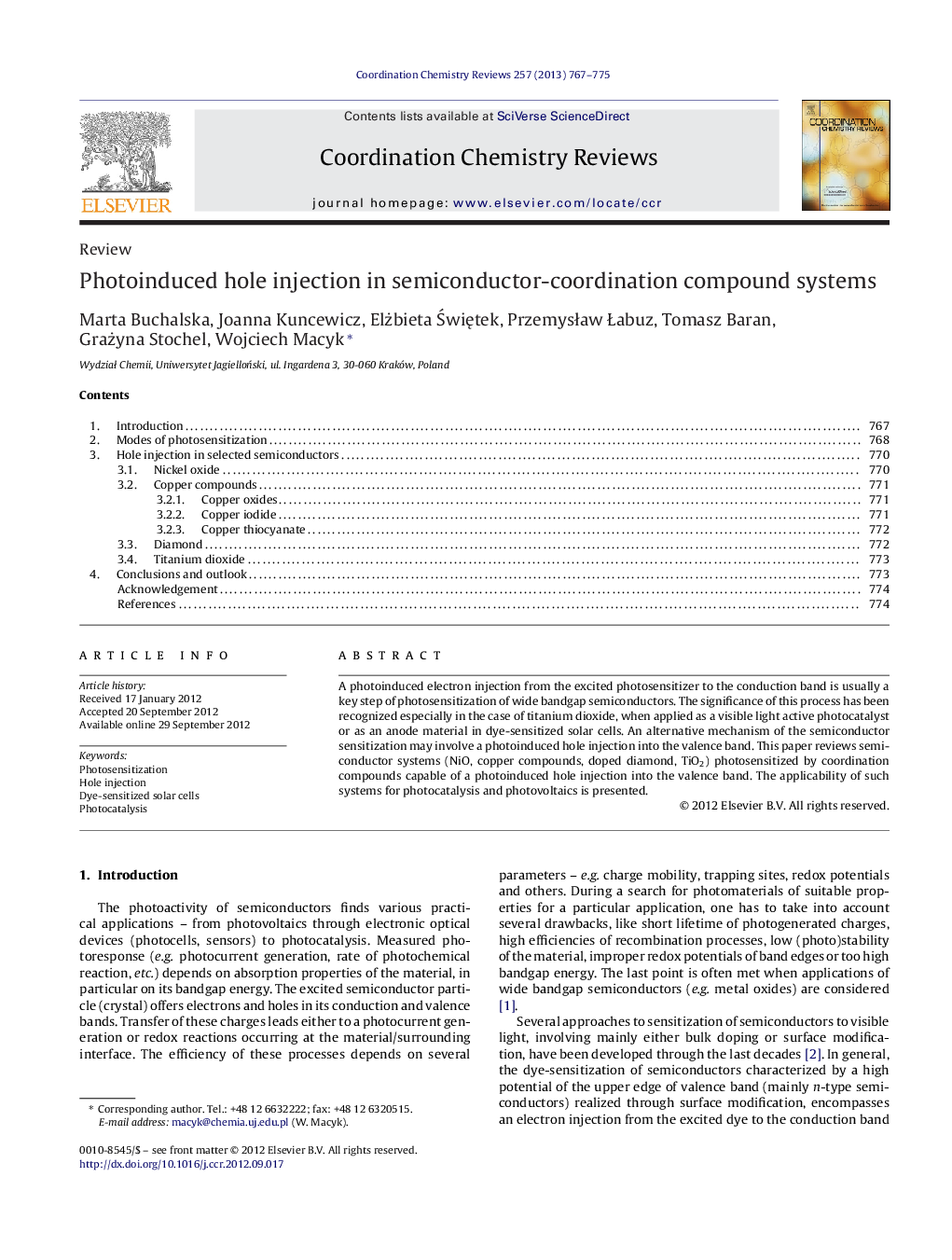| Article ID | Journal | Published Year | Pages | File Type |
|---|---|---|---|---|
| 1300421 | Coordination Chemistry Reviews | 2013 | 9 Pages |
A photoinduced electron injection from the excited photosensitizer to the conduction band is usually a key step of photosensitization of wide bandgap semiconductors. The significance of this process has been recognized especially in the case of titanium dioxide, when applied as a visible light active photocatalyst or as an anode material in dye-sensitized solar cells. An alternative mechanism of the semiconductor sensitization may involve a photoinduced hole injection into the valence band. This paper reviews semiconductor systems (NiO, copper compounds, doped diamond, TiO2) photosensitized by coordination compounds capable of a photoinduced hole injection into the valence band. The applicability of such systems for photocatalysis and photovoltaics is presented.
Graphical abstractFigure optionsDownload full-size imageDownload high-quality image (67 K)Download as PowerPoint slideHighlights► Photosensitization of wide bandgap semiconductors. ► Coordination compounds as photosensitizers. ► Photoinduced hole injection into the valence band. ► Photovoltaic and photocatalytic systems based on hole injection processes.
